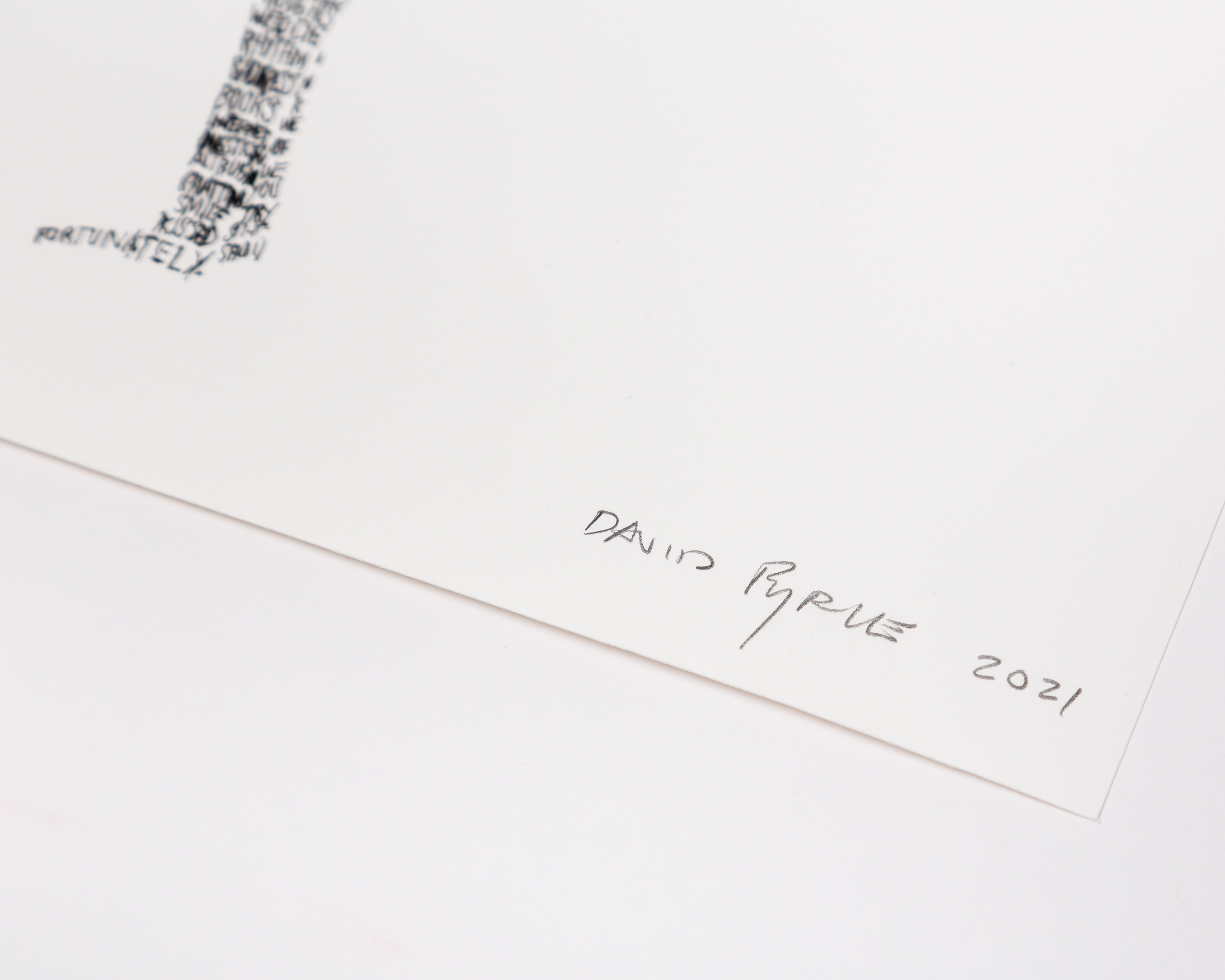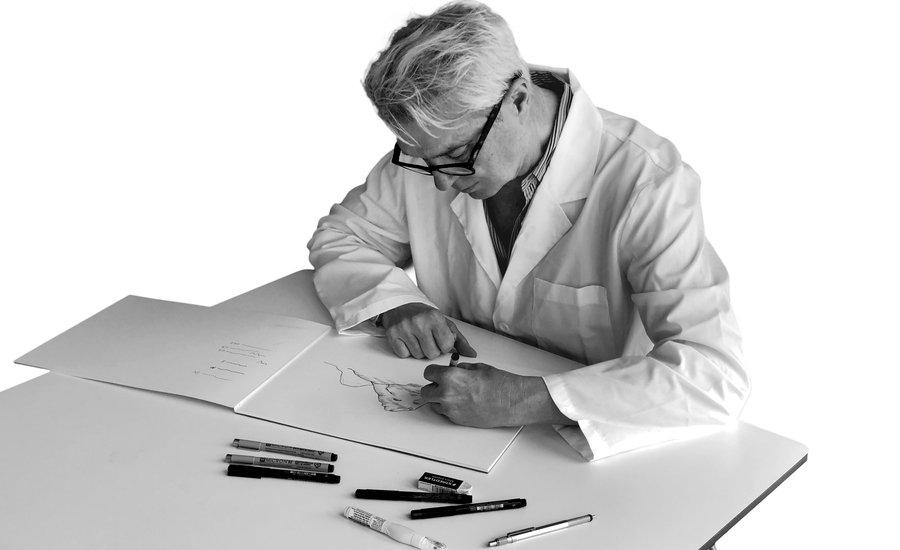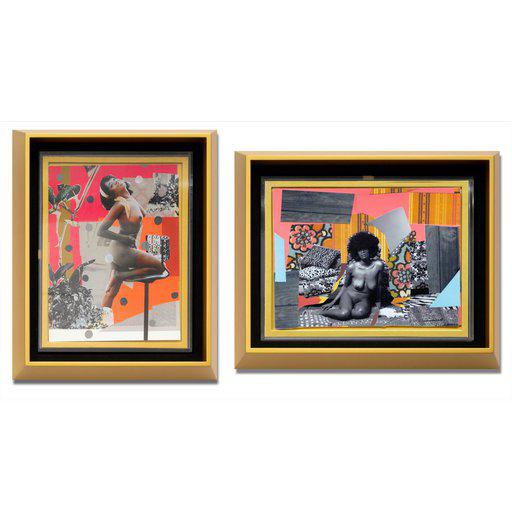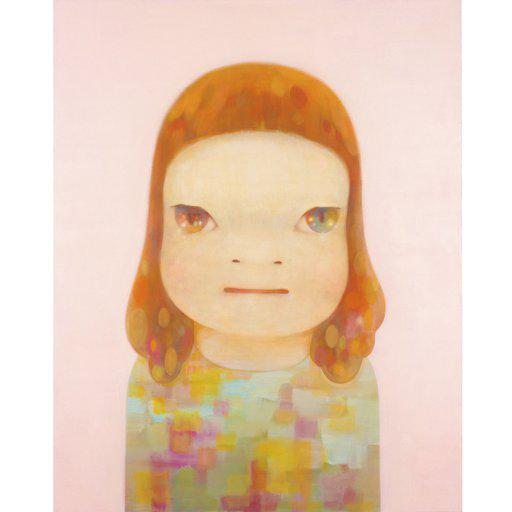David Byrne has been involved with photography, drawing, installations, performance and design ever since his college days in the early 1970s, when he attended both the Rhode Island School of Design and The Maryland Institute College of Art.
He maintained that engagement with contemporary art throughout his time as frontman and founder member of Talking Heads, when the band worked with such artists as Robert Rauschenberg , Ed Ruscha and Howard Finster. He has been publishing and exhibiting his work since the 1990s, and continues to work in a wide range of media.
However, when pandemic restrictions were imposed on New York City, Byrne renewed his focus of expression on one of the purest and most fundamental of art practices - drawing.
Byrne chose to draw, partly because he enjoys the process and partly out of necessity - he needed some new images for an online magazine he was involved with.
He intended to use these drawings as ‘dingbats’ or incidental page ornaments, like the simple, engaging doodles you might have seen breaking up columns of text in magazines such as The New Yorker.
A dingbat, in the typographical sense, once meant an otherwise unintelligible glyph that typesetters placed on a page in order to send a message to printers, or simply to introduce some space around the text.
Initially, Byrne wanted his dingbats to fulfill the same purpose. However, artistic production has a habit of breaking free from stricture and soon Byrne’s dingbats were flapping away from this initial task, embodying moods, thoughts and artistic expressions, exploring the nuances of life under lockdown and evoking the complex, global systems the pandemic had cast in bright light.
Over the past few months he has gathered them together, exhibited them, and is about to publish them in his new book, A History of the World (in Dingbats) .
To mark the publication of this book, as well as a new career retrospective at Pace in New York, Byrne is offering, via Artspace, a limited edition print of one of his dingbats drawings, in a strictly limited edition.
DAVID BYRNE - Reading Each Other, 2021
In David Byrne’s Reading Each Other (2021), two people appear engaged in close conversation. Their bodies are composed of stacks of words and, as the title suggests, many methods of communication flow between them.
“‘Stop being so literal!’ Boy, have I heard that a lot,” Byrne says when asked about the print. “But, of course, we do read one another, though, OK, maybe not exactly like a book. What we speak is only a small part of what we say, yes? The language of gesture, posture, movement, clothing, expression—we all speak it and more or less understand it, sometimes well and sometimes imperfectly, instinctively, without being taught this language in school.”
Byrne created the drawing while in quarantine during Covid-19. He continues, “In the pandemic, we were often reduced to reading each other via screens. As digital culture strives to atomize our relationships, to break us down into mere individuals who never physically meet, we risk being separated from our reading material.”
DAVID BYRNE - Reading Each Other, 2021
 Digital archival print on Museo Portfolio Rag 300 gsm Size: 254 x 356 mm (10 x 14 in) Edition of 50
Hand signed, titled, and numbered.
Digital archival print on Museo Portfolio Rag 300 gsm Size: 254 x 356 mm (10 x 14 in) Edition of 50
Hand signed, titled, and numbered.
Each print is hand signed, titled, and numbered, and comes presented inside a tulip envelope as part of the limited edition of Phaidon's A History of the World (in Dingbats) by David Byrne, a hardcover book that is signed by the author and housed in a clamshell case.
The limited edition is an Artspace / Phaidon edition with a portion of profits directed to charity. To find out more, go here.
 Phaidon's A History of the World (in Dingbats) limited edition book and
Digital archival print on Museo Portfolio Rag 300 gsm Size: 254 x 356 mm (10 x 14 in) Edition of 50
Hand signed, titled, and numbered
Phaidon's A History of the World (in Dingbats) limited edition book and
Digital archival print on Museo Portfolio Rag 300 gsm Size: 254 x 356 mm (10 x 14 in) Edition of 50
Hand signed, titled, and numbered
David Byrne’s practice spans photography, performance, drawing, illustration, video, design, and publishing. In 1975 he cofounded the seminal group Talking Heads. Byrne’s exuberant and radical creativity has challenged classifications of art for decades. His Bicycle Diaries was a Los Angeles Times bestseller and his How Music Works was a New York Times bestseller as well as an Amazon Editors’ pick and a Best Book of the Month. His hit Tony Award–winning theatrical concert American Utopia was adapted by Spike Lee into a concert film that premiered on HBO and received multiple Emmys.




























